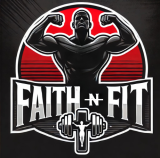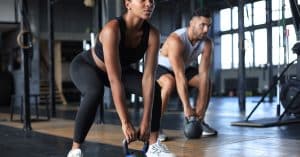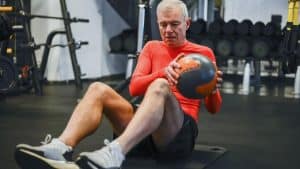When it comes to transforming your body and optimizing your health, diet is the foundation. Whether your goal is to build muscle, lose fat, boost endurance, or simply feel better, the nutritional profile of your diet directly impacts both how you perform and how you look.
Your workouts might be intense, and your motivation strong, but if your diet lacks the right nutrients in the right amounts, progress will be slow—or even nonexistent. Understanding how nutrition fuels your body and shapes your appearance is key to any successful health and fitness journey.
What Is the Nutritional Profile of a Diet?
The nutritional profile of a diet refers to the types, quality, and quantity of nutrients it provides. This includes:
- Macronutrients – Carbohydrates, proteins, and fats
- Micronutrients – Vitamins and minerals
- Fiber, water, and phytonutrients – Essential for digestion, hydration, and cellular health
- Caloric balance – Whether you are in a deficit (fat loss), maintenance, or surplus (muscle gain)
A well-balanced nutritional profile is one that matches your goals and activity level while meeting your body’s biological needs.
How Nutrition Affects Performance
1. Energy and Endurance
Your body relies on carbohydrates as its primary fuel source, especially during high-intensity or long-duration activities. Without enough carbs, you’ll feel sluggish and may “hit the wall” mid-workout.
Key nutrients for performance:
- Carbohydrates – Fuel high-energy workouts (oats, fruits, whole grains)
- Healthy fats – Provide energy for longer, lower-intensity sessions (avocados, nuts, olive oil)
- Water and electrolytes – Maintain hydration and muscle function (especially sodium, potassium, and magnesium)
➡️ A diet low in carbs or electrolytes can cause early fatigue, poor focus, and cramping.
2. Recovery and Muscle Repair
Protein is essential for muscle repair and growth, especially after strength training or resistance workouts.
Key nutrients for recovery:
- Lean proteins – Chicken, eggs, fish, legumes, protein powders
- Anti-inflammatory foods – Berries, leafy greens, omega-3-rich foods
- Micronutrients – Zinc, magnesium, and B-vitamins play major roles in recovery and muscle synthesis
➡️ A low-protein or nutrient-deficient diet slows down recovery, increases soreness, and raises injury risk.
How Nutrition Affects Physical Appearance
1. Fat Loss and Body Composition
Appearance is largely driven by body fat percentage and muscle mass. While exercise shapes the body, diet reveals the shape.
To lose fat, you need a calorie deficit, but quality matters as much as quantity. Diets high in processed foods may create weight loss but result in loose skin, poor tone, and low energy.
Focus on:
- Whole foods – Avoid processed sugar and refined carbs
- Satiety-supporting meals – High-fiber veggies, lean proteins, and healthy fats
- Calorie awareness – Know your maintenance calories and adjust accordingly
➡️ A diet rich in nutrients, not just low in calories, promotes healthy fat loss and a lean appearance.
2. Muscle Growth and Tone
Muscles require a calorie surplus plus adequate protein and training stimulus to grow. The right nutrition not only builds muscle but helps reveal definition.
Key strategies:
- Eat enough – Undereating sabotages gains
- Prioritize protein – 0.7–1.0g per pound of body weight per day
- Nutrient timing – Protein and carbs around workouts enhance growth and recovery
➡️ The right macros help your muscles look fuller, firmer, and more defined.
3. Skin, Hair, and Digestive Health
Your outward appearance also reflects inner health. A diet lacking in micronutrients or high in sugar and trans fats can lead to:
- Dull skin and acne
- Hair thinning or breakage
- Bloating or poor digestion
Support your body’s appearance with:
- Hydration – At least 8–10 cups of water daily
- Antioxidants – Found in colorful fruits and vegetables
- Omega-3 fatty acids – For skin health and inflammation control
➡️ Your gut and skin are often the first places you’ll see signs of poor nutrition.
The Role of Macronutrient Balance
Here’s how the macros you eat affect both performance and appearance:
| Macronutrient | Role | Benefits for Performance | Benefits for Appearance |
|---|---|---|---|
| Protein | Builds & repairs tissue | Speeds recovery, preserves lean mass | Enhances muscle tone, reduces fat gain |
| Carbs | Main energy source | Fuels workouts, brain function | Maintains fullness, supports metabolic rate |
| Fats | Hormone & cell health | Long-term energy, nutrient absorption | Supports healthy skin and hormone balance |
Real-Life Application: Matching Diet to Goal
| Goal | Nutritional Focus |
|---|---|
| Fat Loss | Calorie deficit, high protein, high fiber, minimal sugar |
| Muscle Gain | Calorie surplus, high protein, adequate carbs, strength training |
| Endurance | Carbohydrate loading, electrolyte balance, consistent hydration |
| Overall Health | Balanced macros, nutrient-dense foods, portion control |
Key Takeaways
- The nutritional profile of a diet determines how well you perform, recover, and look.
- Carbohydrates fuel energy, protein supports growth, and healthy fats balance hormones.
- Micronutrients and hydration are just as crucial for performance and appearance as macros.
- Your physical transformation is built in the kitchen just as much as the gym.
Final Word: nutritional profile of a diet
Your body is a tool, not a trophy. When you nourish it with the right foods, you build strength, stamina, and confidence to carry out your calling. Whether you’re training for a race, losing weight, or becoming more disciplined, your diet will determine the quality of your journey.
Train smart. Eat intentionally. And remember—honoring God with your body starts with what you put on your plate.
Read Next…
- How To Align Your Fitness Goals With Your Spiritual Values
- Functional Fitness for People Over 50: Trends and Benefits
- Walking After Meals for Weight Loss
- The Secret to Building Core Strength Effectively
- 10,000 Steps a Day Hacks
Subscribe now and get a 14-day free trial workout app for iPhone users.






